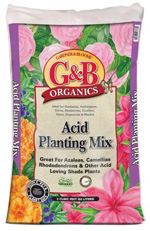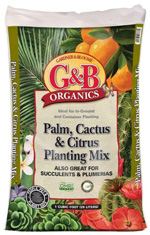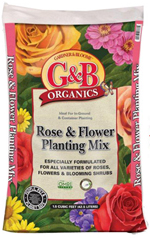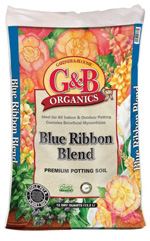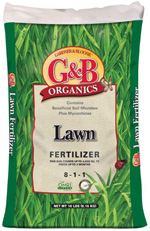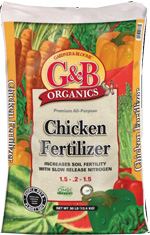|

|
 |
FEATURED QUOTE : "In the end, color combinations come down to our personal preferences, which we must discover through observation and experiment." |
|
NEW ARRIVALS
|

|

|
 |
|
Prized by gardeners for their beauty in the landscape and by flower collectors who proudly display their colorful blooms in elaborate crystal bowls, Camellia japonicas are enjoying renewed popularity across the world. Their classic-shaped flowers herald the spring, and each year new hybrid varieties are introduced to delight collectors everywhere. Camellias were first introduced from Asia to the West in the early 18th century by a Jesuit priest named George Karl Kamel, from whose name camellia is derived. Since then, plant hunters have been searching for camellia species growing wild in China, Japan and throughout the Pacific Rim. Growers then take these new plants and use them to create new hybrids for the home landscape. Because camellias are evergreen, they not only make for great focal points in the garden but also can decorate a deck or patio in containers. They are so versatile they can even be trained on a trellis as an alternative to a shade-tolerant vine. The classic flowers range in shape from loosely-petaled double blooms to peony-shaped and more layered formal blooms. The 3-5" blooms are found in colors including white, shades of coral, pink and red, along with many variegated colors. Some varieties are also fragrant. Unlike their sun-tolerant, winter-blooming sasanqua cousins, japonica camellias prefer filtered shade and bloom from February until June--depending on the local climate.
Most grow 6-8' high and wide, and can get even taller with age if not pruned. They prefer well-amended, fast-draining soil so water doesn't accumulate in their root zones. They prefer to be kept moist--but become drought-tolerant once established.
Camellias require little fertilizer. We recommend waiting until the plants have finished blooming before giving them their first feeding of the year. After flowering, wait for new growth to appear at the ends of branches and then feed every two months with cottonseed meal or an organic acid food through the end of September. It's the perfect time to see our camellias in all of their blooming glory. We promise you will enjoy their spectacular flowers. But be warned, growing camellias and enjoying their flowers can be addictive! |
 |
|
Considering redoing the landscape a bit? Find the old one a bit boring? Perhaps it's time to add the power of purple to your landscape. Purple-flowering plants add a special grace to a landscape. The strong, vibrant purple color goes well with white, blue, or pink and is stunning planted next to orange. It looks particularly striking mixed with green and white variegated foliage. Purple just has a way of bringing other colors out. Because purple-flowering plants are native to so many parts of the world, we have many to choose from. You can use taller purple-flowering shrubs or perennials to create a backdrop for shorter plants. You can also use purple-flowering vines to hide a fence or climb a trellis. In front of those plants, you can layer in some purple-flowering perennials. Finally, add some low growing spreaders to fill in the areas between. Do you have shaded areas? No problem. There are purple-flowering shade-lovers too. Don't just limit your planting to the ground. Many purple-flowering plants look great in containers for patios and decks or even in hanging baskets. You can even create a blend of annuals, perennials, and ornamental grasses to make any pot, urn, window box or decorative planter look fantastic all season long. Many purple-flowering perennials such as echinacea, monarda, nepeta, penstemon, salvia, giant scabiosa, statice and veronica are also wonderful at attracting butterflies and birds--particularly hummingbirds. But most of all, they will spice up a garden and make it come alive with color. |
 |
|
Lawn (lon) noun. A usually closely mown plot or area planted with grass or similar plants. [variant of obsolete laund, from Middle English launde, lawnde, from Old French launde, heath] Heath (heeth) noun. 1. Any of various usually low-growing shrubs of the genus Erica and related genera, native to the Old World, having small, evergreen leaves and small, urn-shaped pink or purplish flowers. 2. An extensive tract of open, uncultivated land covered with such shrubs or similar plants; a moor. Moor (moor) noun. A broad tract of open land, often high but poorly drained, with patches of heath and peat bogs. At what point of history did a lawn become defined solely as closely cropped green turf grass? Was it originally to walk on? Was it developed at the time we domesticated animals such as cows, horses, and sheep that fed on grasses? Was it for lawn bowling, golf, or cricket? "True" grasses include not only what we now know as lawn grass, but also cereal grains, as well as those grains grown as ornamental garden grasses. Bamboo is also in this category. Over the years, the meaning of grass has expanded to include a wide range of plants with narrow to strap-like leaves. This group includes rushes, sedges, liriopes, flax (phormium) and cattails. Today, we also have an even greater list of plants that can be used instead of a turf grass. We call them "lawn substitutes" when they are used in this fashion. All of these plants, as well as the grasses listed above, can be members of your gardens--functioning in a decorative way and complementing other plantings. There are many reasons to consider alternative plants in place of a regularly mown lawn: too much shade, too little water, too much water, a preference for alternative ground covers, a preference for alternative grasses, and the need for regular mowing. There are many beautiful options available today. For example, a number of no-mow ornamental grasses can be used in hard-to-mow areas, or even in a large area, if you like a natural look. There are many lawn substitutes to choose from, depending upon your needs and requirements. The choices increase if you have areas with very little foot traffic. Use substitutes in combination with each other by placing the most traffic-tolerant plants in the heaviest foot traffic areas. Add in some of the many ornamental grasses for a bit of height. Many plants besides the usual lawn grasses will tolerate foot traffic. Some of these flower; others release a wonderful fragrance with each step. Some even do both. Today, more and more people are bringing back a more natural look to their yards and gardens. Many areas of the country are working hard to maintain and reestablish the native plant habitats. You can join in this passionate evolution of gardens. Remember, until recent years, grass meant only a "lawn," green and mown. There are now many alternatives to that bowling lawn look. Enjoy seeking out and planting your new lawn substitutes. |
 |
|
How often should I feed my lawn? Answer: After that, switch to a complete lawn food. If summer weeds become a problem, apply a weed and feed fertilizer. Make sure to give your lawn a final feeding in fall, before it goes dormant, to keep it green through winter. If a lawn goes into the winter looking yellow, you won't be able to green it up until temperatures warm up again. |
 |
|
What You Need:
Step by Step:
Yield: 6 servings |
 click here for a printer friendly version of this page
click here for a printer friendly version of this page
 |
Written content © Garden Partners LLC, or respective authors. All Rights Reserved. Privacy Policy. All written content contained in this site is protected by United States copyright law and may not be reproduced, distributed, transmitted, displayed, published, or broadcast without prior written permission of Garden Partners, LLC. You may not alter or remove any trademark, copyright or other notice from copies of the content. |




